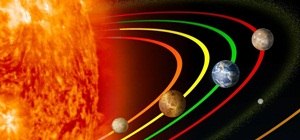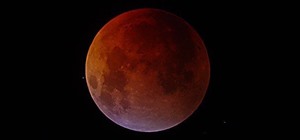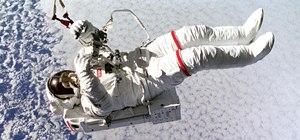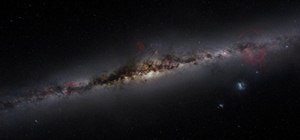I woke up at 4:00 am this morning in order to take some video of the last total lunar eclipse visible from North America till 2014. The eclipse was beautiful. It was amazing to watch the shadow of our planet creep slowly across our nearest neighbor. Once the shadow was blocking out most of the light from the sun, the moon was significantly dimmer and the color had changed to a reddish orange. This color is caused by the same effect that makes our sunrises and sunsets so colorful. The light from the sun is made up of an entire spectrum of frequencies, some of which excite molecules in our eyes that allow us to see color. When the light travels through our atmosphere the blue high energy light is scattered more than the red low energy light.
The video I took documenting the event turned out fairly well. It has not been color-corrected or image-stabilized. I used a tripod, but it was windy. The steady motion of the moon is due to the Earth's speedy rotation. Every 4 or 5 minutes I had to readjust the camera otherwise the moon would be out of frame. I edited this motion out of the video.
At 1:50 in the video, I readjusted the exposure so that the shadowed part of the moon could be seen. At this point, you can also start to see a star that is below the Moon. By watching this star slowly pass the Moon in the video you can see that the Moon is in orbit around the Earth. It takes the Moon about 28 days to go once around the Earth, and as a result the Moon's position is about 40 minutes behind the position it had the previous night. I think it's amazing how you can see this effect in just a few minutes. The entire video was filmed over about 2 hours. It has been sped up so that it only takes about 4 minutes to watch.
Just updated your iPhone? You'll find new Apple Intelligence capabilities, sudoku puzzles, Camera Control enhancements, volume control limits, layered Voice Memo recordings, and other useful features. Find out what's new and changed on your iPhone with the iOS 18.2 update.






































7 Comments
I wish it had been completely clear where I took the video so that the moon wouldn't have appeared quite so dim. The moon wasn't bright enough for me to get clear video of the Moonset which could have been pretty spectacular.
This is just awesome. Thanks for posting. I only saw the end part (and not very well), so this makes it all better.
Glad you liked it. It was fun...but so cold...so very cold...so very very cold. :) When I go out in a couple of days to take some Geminid meteor shower pictures I need to remember that it's December! Also with those I'll have to set it up with my remote trigger and do stills/true time-lapse instead of just using video mode.
How often did you take a picture?
I cheated. I knew I didn't have enough time to set up and put together a good time lapse video. This is actually sped up video from the camera. My camera (Panasonic GH2) allows video frame rates to go down to 2 frames per second which still allows enough light. It also has a mode where it essentially does a digital zoom where it crops down to the central 1920 by 1080 pixels. This means even though I was "only" using a 300mm lens the Moon fills a good portion of the frame. If I did this using stills I'd have to do a batch cropping on thousands of frames.
Advantage is ease of use and ease of processing. Disadvantage is that I don't have anywhere near as much control or dynamic range. This week if I get out to take pictures of the Geminid meteor shower, I'm going to do it right with an external trigger and take true time-lapse images. I'll probably use about 5 seconds a frame...but I'm not sure.
Ohh ok
A very good site. Useful for everybody.
Share Your Thoughts